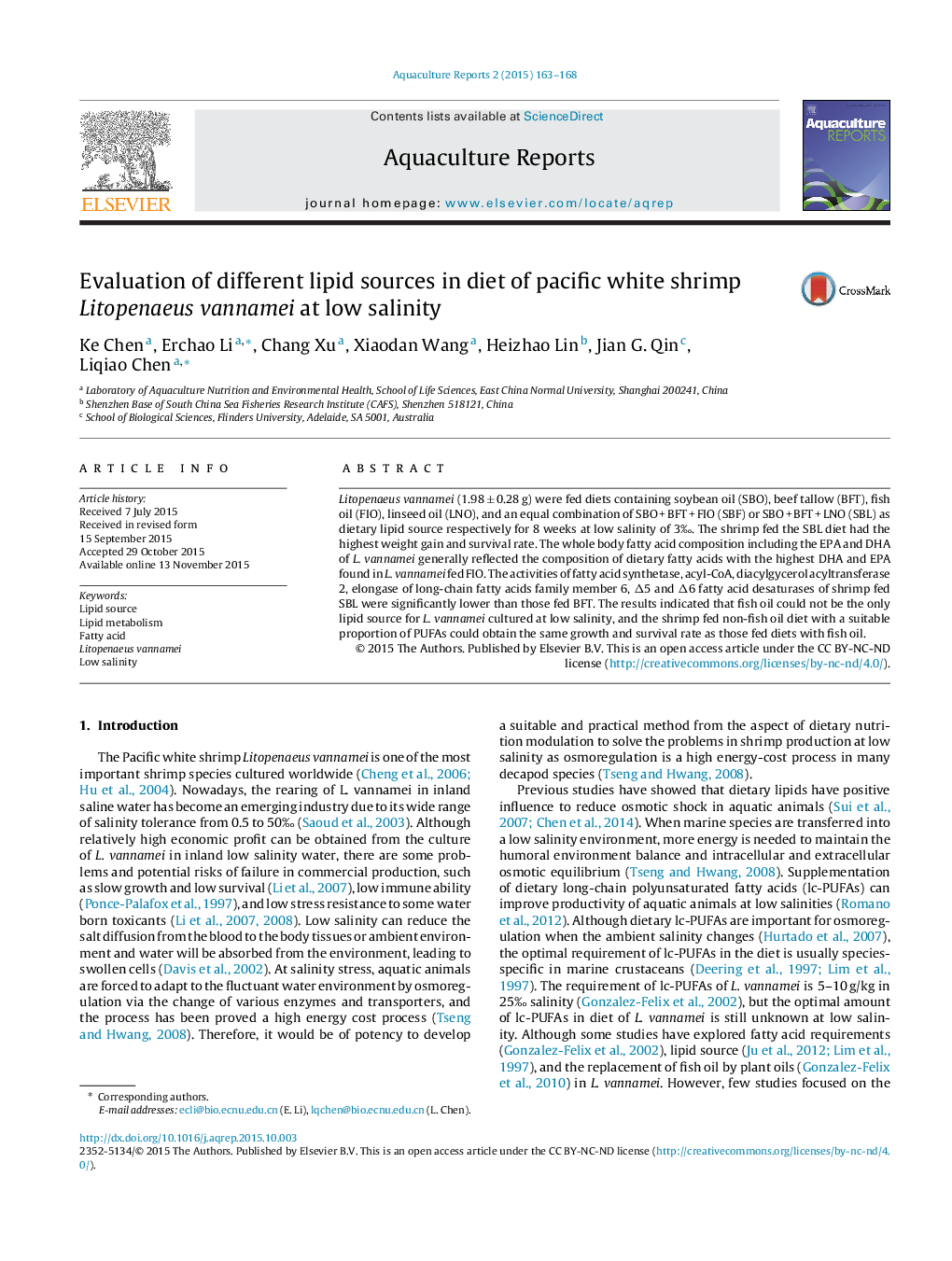| Article ID | Journal | Published Year | Pages | File Type |
|---|---|---|---|---|
| 4437986 | Aquaculture Reports | 2015 | 6 Pages |
Abstract
Litopenaeus vannamei (1.98 ± 0.28 g) were fed diets containing soybean oil (SBO), beef tallow (BFT), fish oil (FIO), linseed oil (LNO), and an equal combination of SBO + BFT + FIO (SBF) or SBO + BFT + LNO (SBL) as dietary lipid source respectively for 8 weeks at low salinity of 3â°. The shrimp fed the SBL diet had the highest weight gain and survival rate. The whole body fatty acid composition including the EPA and DHA of L. vannamei generally reflected the composition of dietary fatty acids with the highest DHA and EPA found in L. vannamei fed FIO. The activities of fatty acid synthetase, acyl-CoA, diacylgycerol acyltransferase 2, elongase of long-chain fatty acids family member 6, Î5 and Î6 fatty acid desaturases of shrimp fed SBL were significantly lower than those fed BFT. The results indicated that fish oil could not be the only lipid source for L. vannamei cultured at low salinity, and the shrimp fed non-fish oil diet with a suitable proportion of PUFAs could obtain the same growth and survival rate as those fed diets with fish oil.
Related Topics
Life Sciences
Agricultural and Biological Sciences
Animal Science and Zoology
Authors
Ke Chen, Erchao Li, Chang Xu, Xiaodan Wang, Heizhao Lin, Jian G. Qin, Liqiao Chen,
